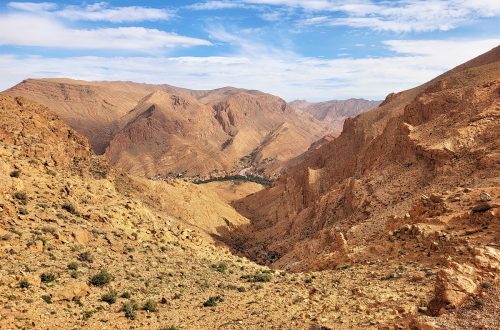If you want to see elephants in the wild, look no further than Chobe National Park.
The 11,700 sq km park in north-western Botswana is home to some 35,000 elephants, the highest concentration of the pachyderms in the world.

The sprawling park was opened in 1968, making it Botswana’s first national park, and it has a diverse range of habitats.
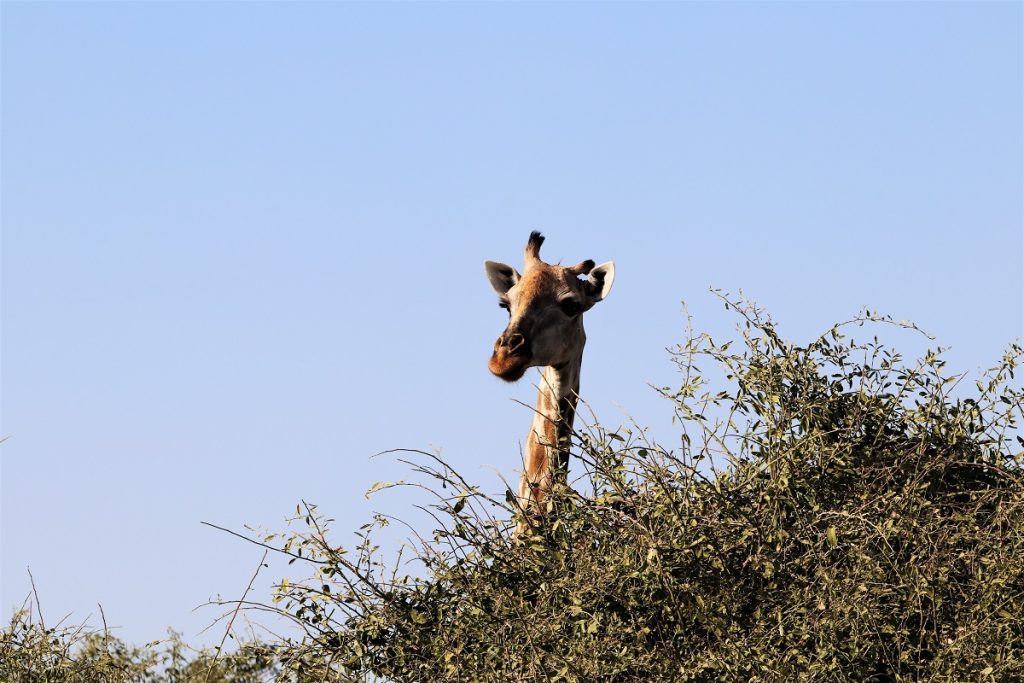
The area around the Chobe River is home to the park’s biggest concentration of animals.
There, alongside the aforementioned elephants, you’ll find giraffes, vervet monkeys, lions, crocodiles, impala, kudu, zebra and more.

The park is also home to more than 400 species of bird, including eagles, kingfishers, herons, kori bustards (below) and the spectacular carmine bee-eater (above).
The park is also home to more than 400 species of bird, including eagles, kingfishers, herons, kori bustards (below) and the spectacular carmine bee-eater (above).

I spent two days exploring the Chobe Riverfront area (below), wild camping in one of the park’s campsites not far from the river.

After arriving in the park late morning and settling into the camp, we set off for our first game drive at 4pm.
We headed in the direction of the Chobe River and along the way we spotted guinea fowl, hornbills, impala and kudu.
Just up from the riverbank, we were awe-struck to find a lion, camouflaged by the bushes as it enjoyed a bite to eat.

Down by the river, I was amazed by how many elephants there were.
I knew the park was home to more elephants than anywhere else on Earth, but seeing so many freely walking around in one place was mind boggling.
On top of that, we also spied a few crocodiles, giraffes (above) and a hippo in the distance, basking in the mud.
The sheer volume of wild animals we saw in such a small area was astonishing and I was surprised by just how close we were to them.

From the riverbank, we headed in the direction of the scrub, where we saw yet more giraffe, kudu (above), impala and a sable.

Towards the end of our drive, we came upon the lion we saw at the start, now lying out in the open (above).
He was a magnificent beast and I was surprised by how chilled and unbothered he was by us gawping humans, possibly because he’d just had what was presumably a good meal for a lion.
As we stopped to watch the lion, a herd of elephants that had been drinking down by the river began making its way up the bank to where the lion was (below).

As the herd passed, the adults formed a protective cocoon around the babies and chased the lion off, trumpeting their trunks in the process.
The elephants made an enormous racket as they trundled past, continuing to flank the babies.
It was an incredible feat to witness after such a short period of time in the park.

As the sun began to set over the Chobe River, we made our way back to camp in time for dinner, still stunned by the marvellous scenes we’d encountered.
The following morning, we were up and out just after dawn, heading back towards the river.

There we found three jackals happily helping themselves to the lion’s leftovers from the day before.
We drove around the park, which seemed noticeably quieter than the previous evening, although we once again came across a steady stream of elephants and giraffes.

Down by the river, we spotted two lionesses lying down behind a bush, while across the river a third lioness was prowling around (below).

We stopped and spent some time watching the lionesses, as eventually, the third lioness crossed the river to join the other two.

The Chobe Riverfront is home to two adult male lions (two brothers who lead a pride) and it wasn’t long before we found the second male lion sauntering through the bush (above).
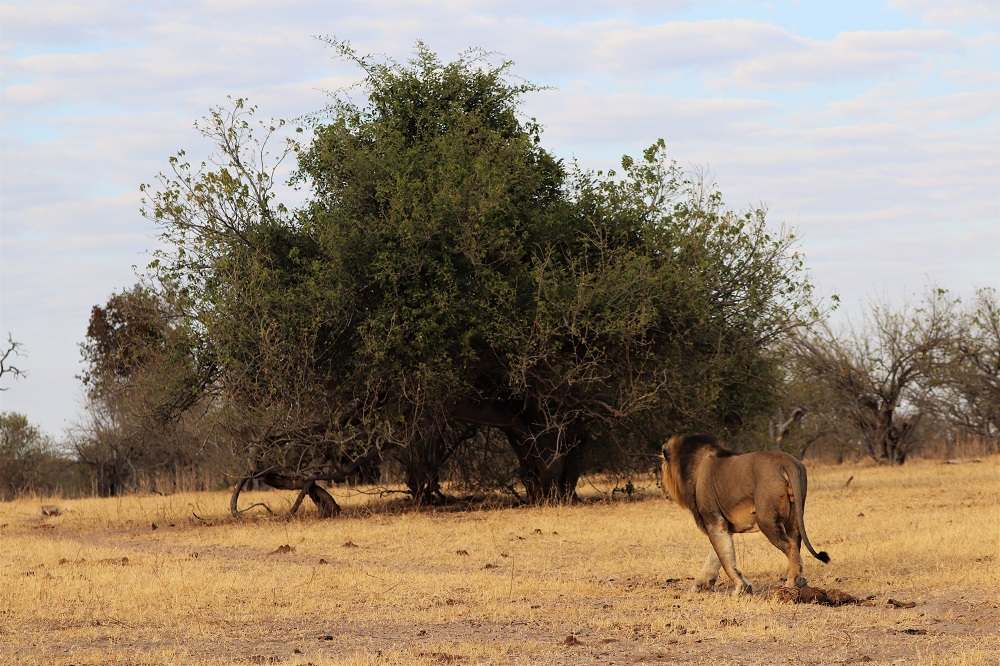
The lion got right up close to our truck, again completely unperturbed by us, before striding right on by and carrying on with his journey.
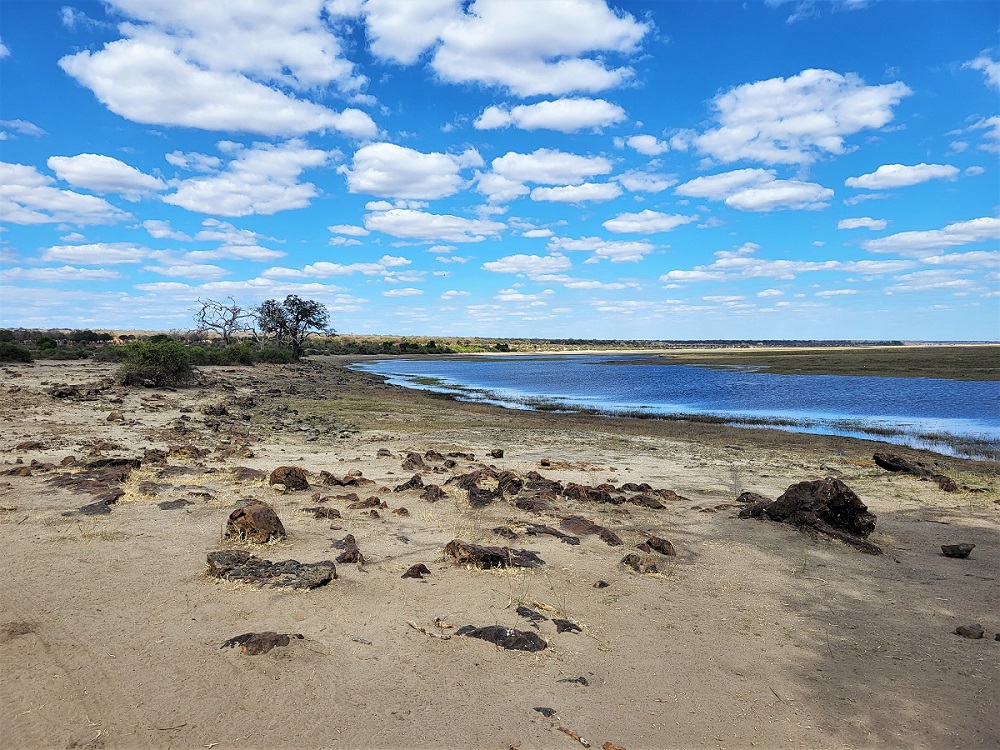
Shortly afterwards, we stopped at a stretching point near the river, where I spent some time photographing a cape glossy starling (below).
We saw the starlings everywhere in Botswana and I couldn’t get enough of the stunningly irridescent birds whose plummage glistened in the winter sun.

We headed back to camp, having spent almost five hours driving around the park.
We had lunch, before popping to Kasane, the nearest town to Chobe, for supplies and from there to the river, where we enjoyed a three-hour boat ride.
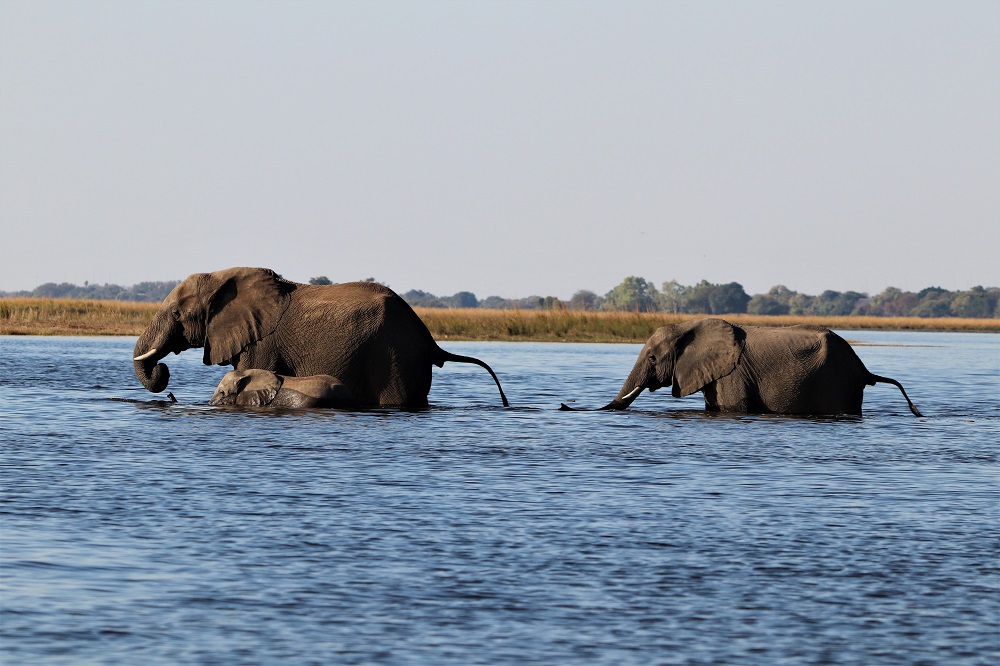
The Chobe River cruise was one of my favourite experiences in Botswana.
We saw some incredible wildlife (spoiler alert: swimming elephants, baby elephants and swimming baby elephants) and I’ll write about it in my next post to do it justice.




